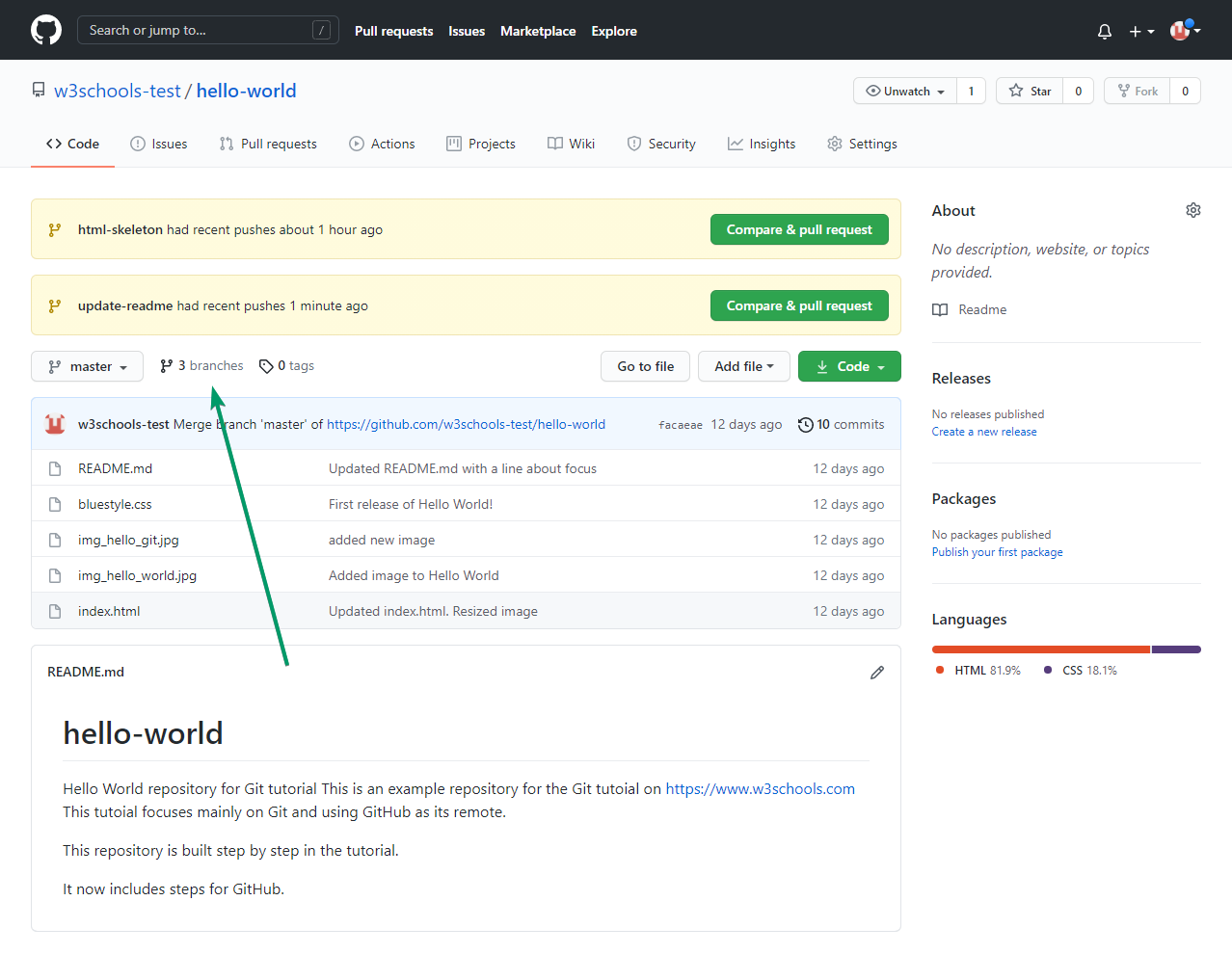

- #Update a branch from master git for free
- #Update a branch from master git update
- #Update a branch from master git code
- #Update a branch from master git license
Phase0 - COMPLETE A guide will be published to explain how maintainers/project managers can change the defaultīranch on pagure.io, which they can then do based in their projects desires.įedora-docs/* fedora-docs-i18n/* Phase2 - Īlong with the changes, we will update the branch filter list and forbid 'master' from being pushed at all. This change will take place in a number of phases: The Fedora Project will be a more welcoming place for new contributors. And having different default branches on different namespaces is not very appealing. For example: containers do not have/use rawhide.
#Update a branch from master git for free
This small bit of naming adjustment is in-line with Fedora's vision for free and open source software built by inclusive, welcoming, and open-minded communities. This Change will move many repositories (see below) to use a "main" branch as default. Many git repositories currently use "master" as the default branch. Some language around our git repositories is dated and could be more inclusive. The Fedora Community strives to be open and welcoming. rpms (packages) will have a "rawhide" branch for rawhide with a symref (link) of "main". Specific repositories will be manually moved and default git branch for new projects will be set to use "main". Our good friend git checkout is the right tool for the job.This Change will move Fedora git repositories to use "main" as the default git branch instead of "master". The simplest thing that could possibly workĪs it turns out, we’re trying too hard.
#Update a branch from master git license
Maybe, but I think we might have our Git license revoked if we resort to such a hack. When in doubt, pull out the brute force approach? Surely we can just check out the feature branch, copy the files we need to a directory outside the repo, checkout the master branch, and then paste the files back in place. But we want to be done with this task in ten seconds, not ten minutes. Maybe we can just merge the whole branch using -squash, keep the files we want, and throw away the rest. You’re thinking of git add -interactive (which won’t work for our purposes either). We could hunt down the last commit to each of these files and feed that information to git cherry-pick, but that still seems like more work than ought to be necessary. We just want to grab these files in their current state in the feature branch and drop them into the master branch. We don’t want to have to track down all the commits related to these files. git cherry-pick wants to merge a commit - not a file - from one branch into another branch. The team has made numerous commits to the files in question. Isn’t this exactly what git cherry-pick is made for? Not so fast. This seems like it should be a simple enough task, so we start rummaging through our Git toolbox looking for just the right instrument.
#Update a branch from master git code
The code you need to grab is isolated to a handful of files, and those files don’t yet exist in the master branch. (For this example, we’ll assume mainline development occurs in the master branch.) You’re not ready to merge the entire feature branch into master just yet. Something comes up, and you need to add some of the code from that branch back into your mainline development branch. They’ve been working on the branch for several days now, and they’ve been committing changes every hour or so.

Part of your team is hard at work developing a new feature in another branch.


 0 kommentar(er)
0 kommentar(er)
